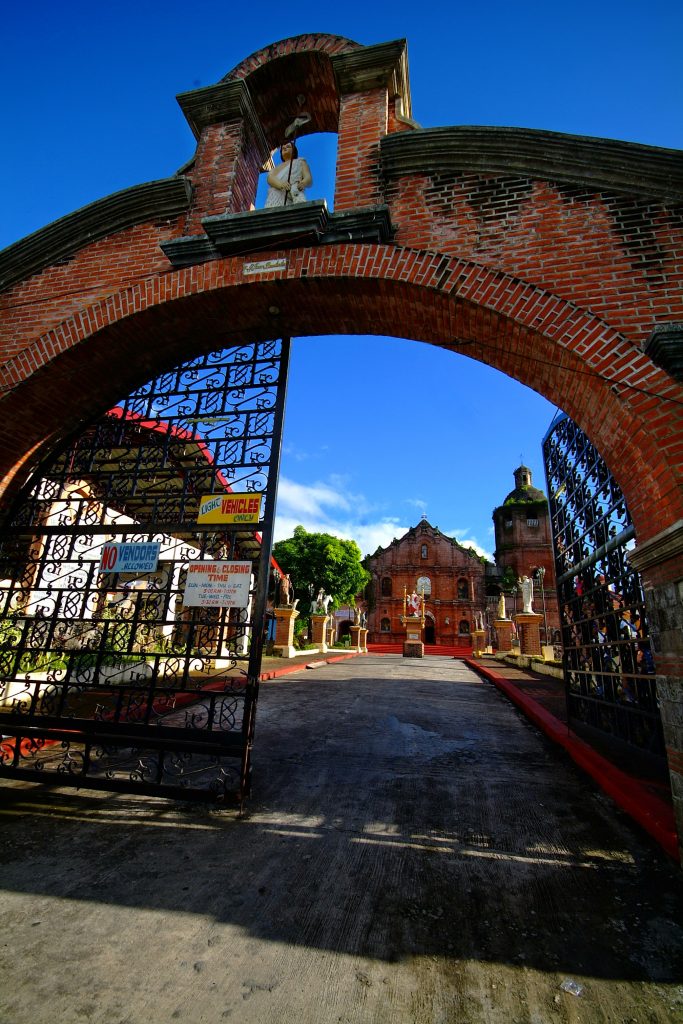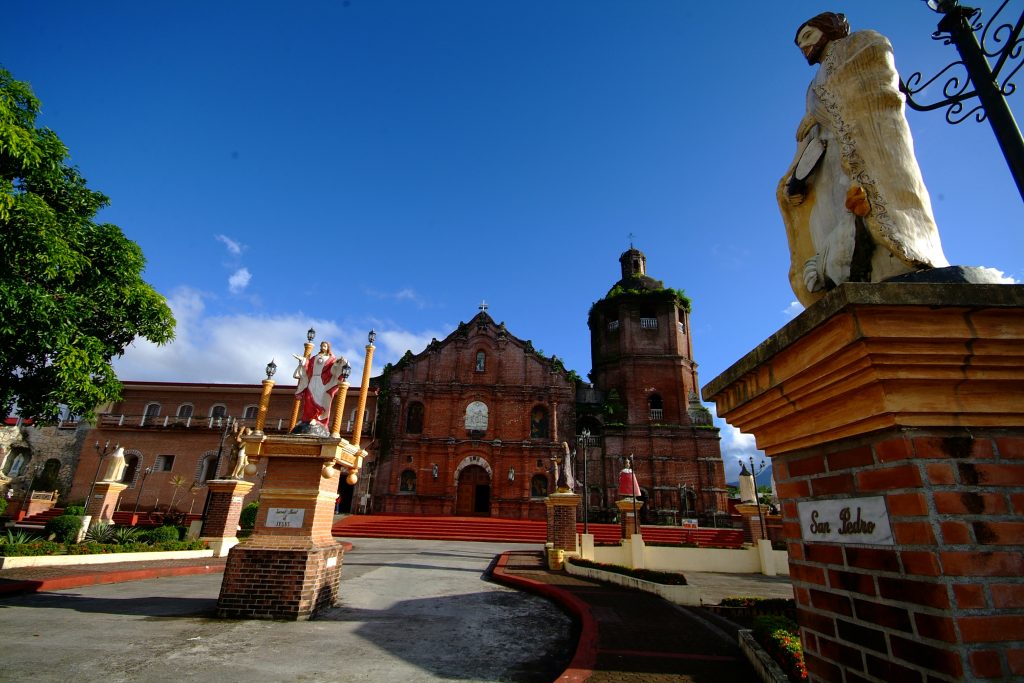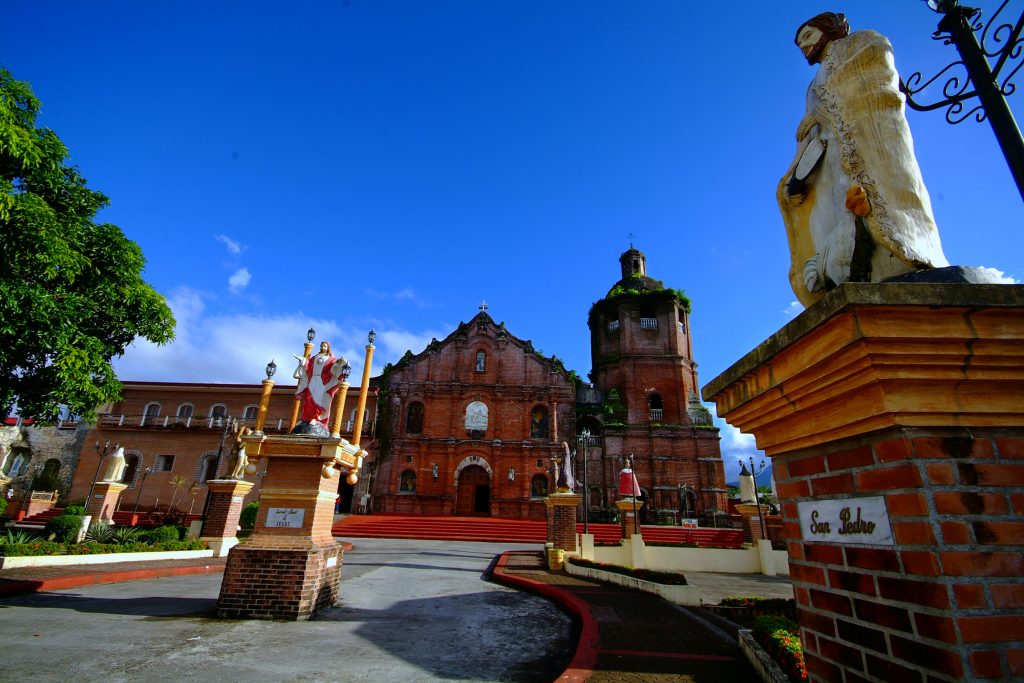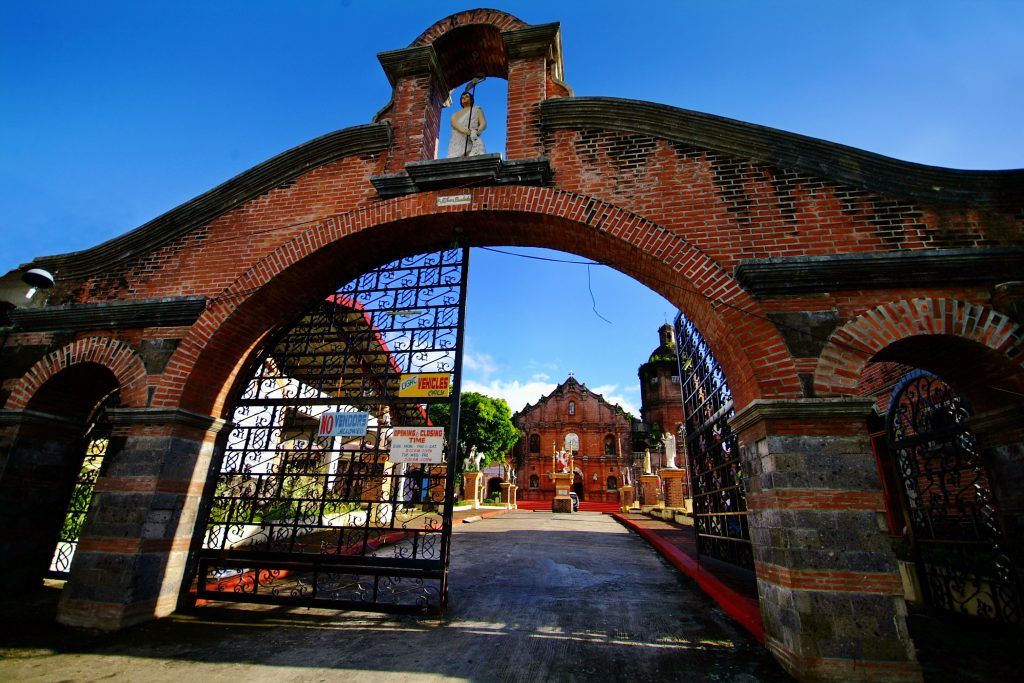St. Jonh the Baptist Parish – Liliw
St. John the Baptist Parish Church (Filipino: Simbahan ng Parokya ng San Juan Bautista), also known as Liliw Church or Lilio Church, is one of the Roman Catholic churches in Liliw, Laguna, Philippines. Its feast is celebrated every August 29 known as the Martyrdom of St. John the Baptist. The church is known for its red bricked façade and baroque style architecture.
Source: https://en.wikipedia.org/wiki/Saint_John_the_Baptist_Parish_Church_(Liliw)
Our Lady of the Pillar Parish
The church “Our Lady of the Pillar” was first established in 1815. It is built in the farthest corner of “Hacienda de Calauan” owned by Miguel Lopez de Legazpi, founder of Manila. Legazpi bequeath the hacienda to his grandson, Juan Salcedo after his death. The image of the virgin Mary kept in this church is said to be miraculous and devotees, with their prayers and petitions, flock here during the festival, honoring the “Lady of the Pillar”, held annually every October 12. The church has been recently restored and the exterior design has been well preserved.
Source: https://www.flickr.com/photos/11541098@N06/9142935426
St. Augustine Church – Bay
St. Augustine Parish Church (Filipino: Simbahan at Parokya ni San Agustin) is the only Augustinian Roman Catholic church in Bay, Laguna, in the Philippines. The church was first administered by Augustinians friars and later transferred to the Franciscans.
Source: https://en.wikipedia.org/wiki/San_Agustin_Parish_Church_(Bay,_Laguna)
San Isidro Labrador Parish Church – Biñan City
San Isidro Labrador Parish Church (Filipino: Simbahan ng Parokya ni San Isidro Labrador), commonly known as Biñan Church, is the oldest Roman Catholic church in Biñan, Laguna, Philippines under the Roman Catholic Diocese of San Pablo. It is located in the City Proper of Biñan, besides Biñan City Musuem (former Biñan Municipal Hall) and Monument Plaza of José Rizal. The current parish priest is Rev. Fr. Buenaventura C. Ubarco.
Source: https://en.everybodywiki.com/San_Isidro_Labrador_Parish_Bi%C3%B1an
Saint Polycarp Parish – Cabuyao
January 16, 1571 when Miguel Lopez de Legaspi declared Cabuyao, then known as Tabuko, to the inhabitants as an “encomienda”. The Order of Missionaries of the Augustinian-Recollects came to Tabuko. When the Augustians left, the Franciscan Friars took over, headed by an elderly friar, Fray Velin. When they arrived by boat, they saw women washing clothes along the lake they were asked what the name of the place was. These women thought that the friars were asking for the name of the tree bark that they were using to wash their clothes and they replied, “Kabuyaw”. From then on, the name Tabuko became “Kabuyaw” until later the Americans changed its spelling to “Cabuyao”.
The friars realized that the natives had no place of worship and they looked for a place to build the church. They decided to build it in Marinig, which happened to be the center of the town due to easy access to Laguna de Bay. The first church was built within a year. However it was built on loose sand. Due to frequent flooding in the area, the friars decided to move the church to a higher ground creating a new pueblo North Marinig.
1763 The construction of the new church started. Along with it, the new roads, bridges, plaza, public market, and a tribunal (municipal building) were also constructed.1771 The church was finally finished and was dedicated to St. Polycarp, Bishop and Martyr and titular head of the Catholic Church in the whole of Asia.
Source: https://www.stpolycarp.com/history/our-parish/
St. John the Baptist Catholic Church – Calamba City
Jesuit Missionaries in 1757 purchased a big portion of land called Hacienda de San Juan for their missions but the parish was only established in 1779 by the Franciscan Friars upon gaining independence from the parochial church of Cabuyao (formerly known as Tabuco). The stone church was originally built in 1859 but destroyed on February 12, 1945 during the Second World War. The reconstruction of the church of Calamba was headed by Father Eliseo Dimaculangan. The original altar was burned in 1862 but immediately rebuilt by Father Leoncio Lopez. The first Filipino priest, Father Angel Villaruz, served the longest in this church for 43 years since 1901.
Source: https://en.wikipedia.org/wiki/Saint_John_the_Baptist_Parish_Church_(Calamba)
San Isidro Labrador Catholic Church – Calauan
1860 Saint Isidore the Laborer Parish Church of Calauan / Simbahan ni San Isidro Labrador/ Church of Calauan (Calauan, Laguna). In 1860, a church made of bricks and stone to honor its patron saints San Isidro Labrador and San Roque. Doña Eleuteria Punzalan financed its construction, while Don Paulino Gavino Oliva donated the church bell in 1867. (Calauan town proper).
Parish of the Transfiguration of the Lord – Cavinti
The Transfiguration of Our Lord Parish Church is the only Roman Catholic church in Cavinti, Laguna, Philippines. Its titular patron is Señor del Trasfiguracion or commonly known as El Salvador del Mundo (Divine Savior of the World) whose feast day is celebrated every August 6. The Our Lady of Snows (Nuestra Señora de las Nieves) and St. Joseph, husband of Mary served as the town’s secondary patrons.
Source: https://en.wikipedia.org/wiki/Cavinti_Church
San Sebastian Catholic Church – Famy
San Sebastian, ang dakilang patron sa bayan ng Famy. Dating tinatawag na Calumpang bilang isa sa mga baryo ng bayan ng Siniloan, Ang Famy ay hinango sa apelyido ng ina ni Emilio Aguinaldo na si Trinidad Famy Aguinaldo bilang pagpaparangal sa kanya at sa kanyang Ina. Noong 1910 nang maging isang ganap na bayan ang bayan ngunit nanatiling sakop ng Parokya ng Siniloan.
Source: https://www.facebook.com/pg/SanSebastian.Famy/about/?ref=page_internal
St. John the Baptist Parish – Kalayaan
Longos is a barrio of the town of Kalayaan, the municipality in between Paete (Tutubi’s hometown) and the barong weavers’ town of Lumban. Tucked away on Real St and walking distance from the Exotikk Restaurant and RS Resort near kilometer marker 100 of Manila East Road (national highway) is the old stone church of Longos dedicated to San Juan Bautista (St. John The Baptist) whose feast day falls on December 27 (the town fiesta of Kalayaan that Tutubi used visit in his childhood).
Source: https://www.backpackingphilippines.com/2010/09/san-juan-church-longos-kalayaan-laguna.html





